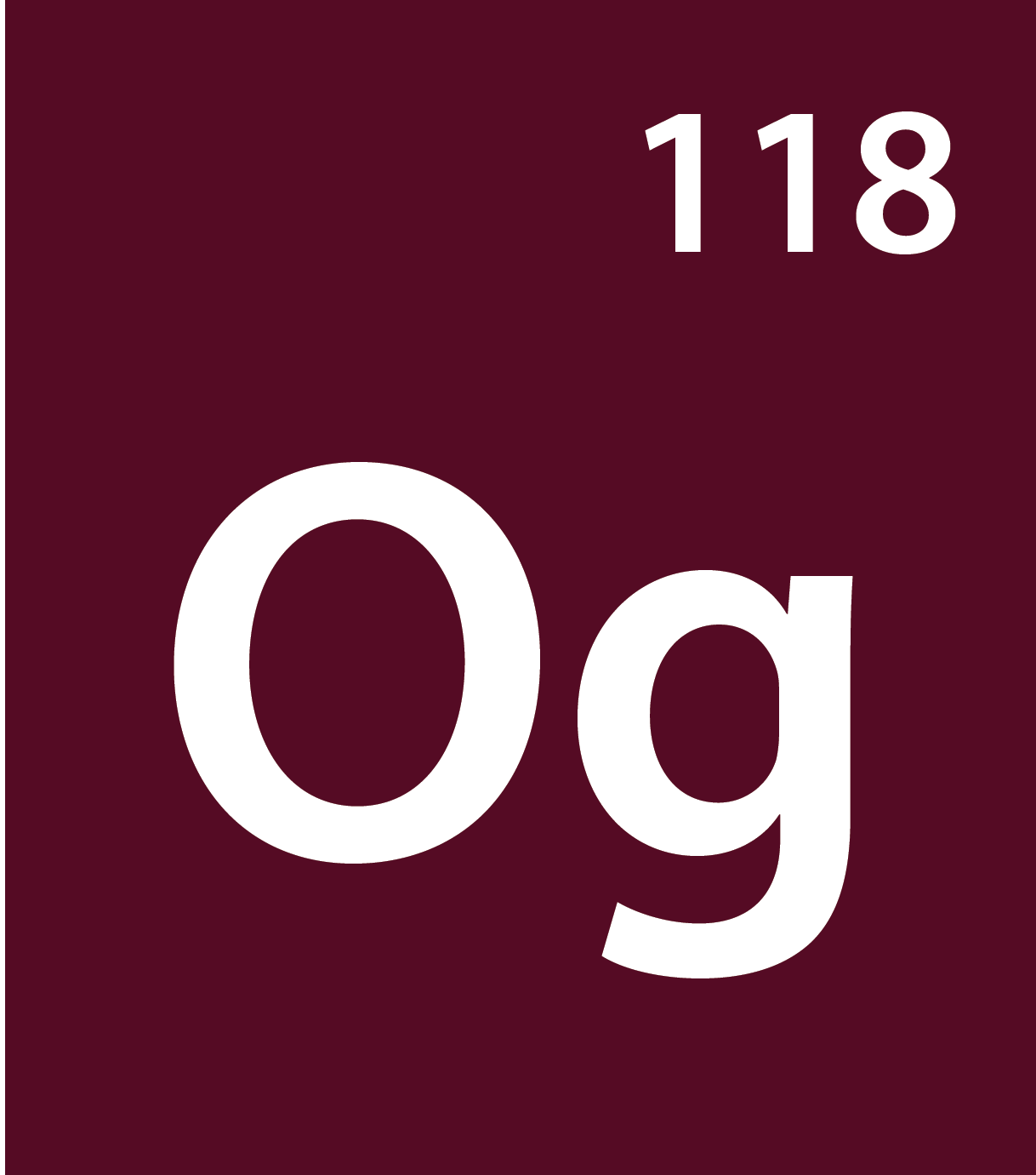Oganesson (Og)
Oganesson has no naturally-occurring isotopes.

Experiments conducted at Dubna, Russian Federation, at the Flerov Laboratory of Nuclear Reactions (by workers from the Joint Institute for Nuclear Research in Russia and the Lawrence Livermore National Laboratory in the United States), indicate that “element 118” (the former name for Oganesson) was produced — not a large quantity, though: one atom in the spring of 2002 and two more in 2005. The name Oganesson recognizes Professor Yuri Oganessian (born in 1933) for his pioneering contributions to transactinoid elements research. His many achievements include the discovery of superheavy elements and significant advances in the nuclear physics of superheavy nuclei including experimental evidence for the “island of stability.”
The 2002 experiment at Dubna involved firing a beam of Calcium-48 at Californium-249. The experiment took four months and involved a beam of 4 x 1019 calcium ions to produce the single event believed to be the synthesis of element 118 (now Oganesson). These experiments were carried out following calculations by Robert Smolanczuk (Soltan Institute for Nuclear Studies, Poland) on the fusion of atomic nuclei. His calculations suggested that it might be possible to make this element by fusing lead with krypton under carefully controlled conditions.
Properties of Oganesson
| Name | Oganesson |
| Symbol | Og |
| Atomic number | 118 |
| Atomic weight | [294] |
| Standard state | Presumably a gas at 298 °K |
| CAS Registry ID | 54144-19-3 |
| Group in periodic table | 18 |
| Group name | Noble gas |
| Period in periodic table | 7 |
| Block in periodic table | p-block |
| Color | Unknown, but probably a colorless gas |
| Classification | Non-metallic |
| Melting point | No data available |
| Boiling point | No data available |
| Density of solid |
5.7 g/cm3 (predicted) |



